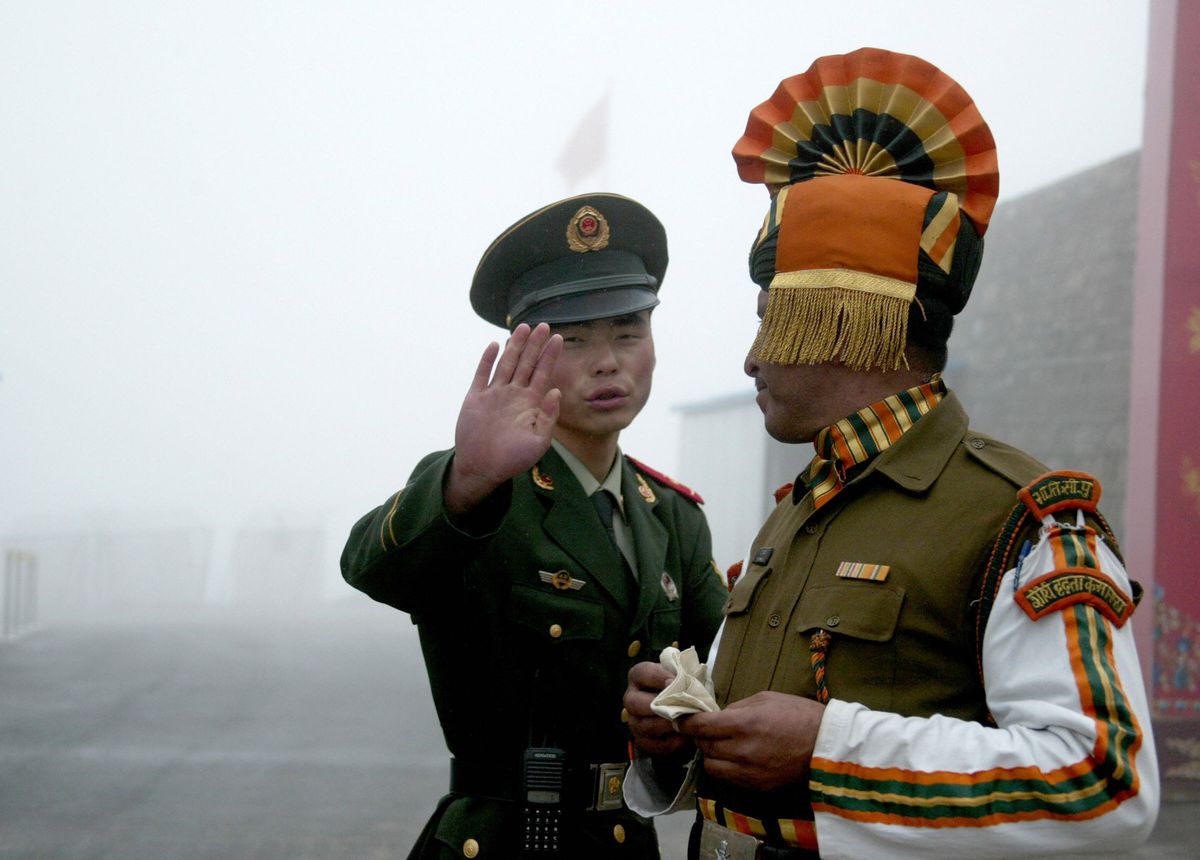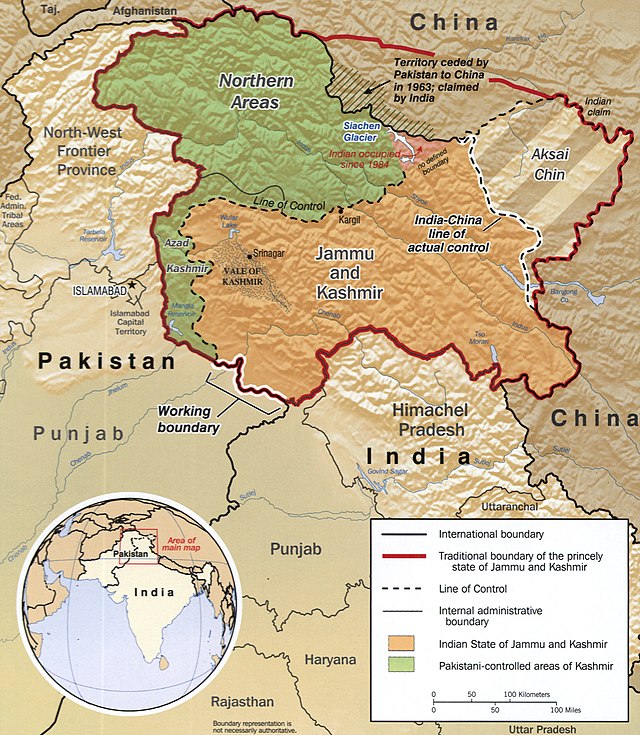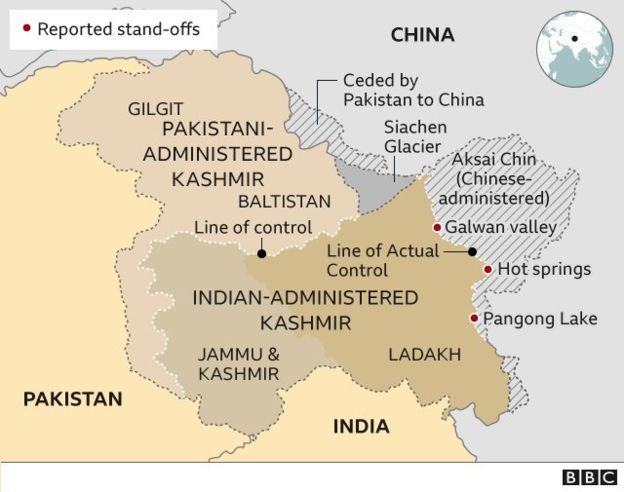India says 20 soldiers killed during clash along India-China border

A few minutes every morning is all you need.
Stay up to date on the world's Headlines and Human Stories. It's fun, it's factual, it's fluff-free.
In the early hours of Tuesday morning, Indian and Chinese troops clashed along the Line of Actual Control (LAC) marking a major escalation in the monthslong standoff at their disputed border. The clash resulted in the death of 20 Indian soldiers and an unknown number of Chinese soldiers.
The deaths are the first fatalities in the four decadelong dispute between the neighbors.

In a statement, the Indian Army confirmed the death of 20 troops, including one officer as a result of the confrontation. Three were killed during the clash and 17 died after sustaining critical injuries.
An Indian commander also said that dozens of soldiers were missing implying capture by the Chinese.
New Delhi based news agency ANI, reported that the Chinese side suffered 43 casualties, citing government and military sources. However, Chinese officials and state media outlets have not released any official numbers.
Officials from both sides have attested that no shots were fired, which is in line with their de facto border code not to use firearms. Instead, soldiers resorted to fist fighting and the use of crude weapons such as stones, iron rods and clubs. It is also said that some troops potentially reinforced with nails and barbed wire.
The clash allegedly started during a meeting attended by hundreds of soldiers from both sides who had congregated at the Galwan Valley region to discuss efforts to de-escalate tensions.

What triggered the fighting remains unclear, with both sides giving conflicting reports of incidents prior to the escalation.
At the meeting – according to an Indian source – Chinese officers insulted a group of Indian soldiers including a commanding officer, thus provoking a fight between soldiers which quickly spiraled into a brawl.
“They attacked with iron rods, the commanding officer was grievously injured and fell, and when that happened, more soldiers swarmed to the area and attacked with stones,” the source told Reuters. “The Chinese side [then] brought in reinforcements and the brawl went on for a couple of hours.”
Indian Foreign Ministry spokesperson Anurag Shrivastava, labeled the incident as “an attempt by the Chinese side to unilaterally change the status quo” on the border.
“India is very clear that all its activities are always within the Indian side of the Line of Actual Control. We expect the same of the Chinese side,” said Shrivastava.
The ministry said that while it maintains expectations that the situation can “unfold smoothly” through dialogue, they remain “strongly committed to ensuring India’s sovereignty and territorial integrity.”
On the other hand, Chinese military spokesman Zhang Shuli, released a statement saying that Indian troops “seriously violated the mutual consensus reached by both countries …. broke their promises and once again crossed the LAC to engage in illegal activities.”
“They have deliberately launched a provocative assault, leading to an intense physical clash that caused death and injury,” he said.
He then addressed the Indian military and asked that they “restrict the front line troops and stop all provoking and intervening actions” and “meet China halfway so both sides can return to the correct track of communication to solve disputes.”
Following the incident, Indian Army sources said that the Chinese military reached out and called for both nations’ major general to defuse tensions.
Earlier this month, top Chinese and Indian military generals met and reported that both sides have vowed to “peacefully resolve the situation … in accordance with various bilateral agreements.”
Kelsey Broderick, Asia analyst with the Eurasia Group, said that considering the “higher-than-normal nationalism on both sides,” this incident “[increases] the chance that the current standoff becomes a prolonged and unresolved situation.”
“These types of skirmishes are likely to become more frequent as China asserts more territorial claims and India starts to push back against Chinese incursions,” she added.
Her concerns were reiterated by Long Xingchun, the president of Chinese think tank – Chengdu Institute of World Affairs.
“These are the first casualties happening during a border conflict between China and India in decades, and it could arouse extreme nationalistic voices inside India that push its government to adopt a hawkish stance against China,” Long said. “If India really did so, it would lead to an even more intensified situation that could result in more casualties.
“It is imperative for both sides, especially between national leaders, to calm down the situation and tighten the border control, instead of being swayed by extremists,” Long insisted.
Although the current situation appears dire, some assert that a war is unlikely.
“Whatever India might want to do it’s not in a position to do,” said Bharat Karnad, a professor of security studies at the Center for Policy Research at New Delhi, citing India’s economic and health crisis caused by the coronavirus.
“The Modi government is in a difficult position,” he said. “This is bound to escalate … [but] we are not prepared for this kind of escalation.”
Despite a previously rejected offer to mediate tensions between India and China, the State Department in Washington has said that the United States is “closely monitoring” the situation.
“Both India and China have expressed a desire to de-escalate, and we support a peaceful resolution of the current situation,” the department said in a statement.
Have a tip or story? Get in touch with our reporters at tips@themilsource.com




Comments ()